SLVS568D January 2005 – April 2016 TLV341 , TLV341A , TLV342 , TLV342S
PRODUCTION DATA.
- 1 Features
- 2 Applications
- 3 Description
- 4 Revision History
- 5 Pin Configuration and Functions
-
6 Specifications
- 6.1 Absolute Maximum Ratings
- 6.2 ESD Ratings
- 6.3 Recommended Operating Conditions
- 6.4 Thermal Information: TLV341
- 6.5 Thermal Information: TLV342
- 6.6 Thermal Information: TLV342S
- 6.7 Electrical Characteristics: V+ = 1.8 V
- 6.8 Electrical Characteristics: V+ = 5 V
- 6.9 Shutdown Characteristics: V+ = 1.8 V
- 6.10 Shutdown Characteristics: V+ = 5 V
- 6.11 Typical Characteristics
- 7 Detailed Description
- 8 Application and Implementation
- 9 Power Supply Recommendations
- 10Layout
- 11Device and Documentation Support
- 12Mechanical, Packaging, and Orderable Information
6 Specifications
6.1 Absolute Maximum Ratings
over operating free-air temperature range (unless otherwise noted)(1)| MIN | MAX | UNIT | ||||
|---|---|---|---|---|---|---|
| V+ | Supply voltage(2) | –0.3 | 5.5 | V | ||
| VID | Differential input voltage(3) | ±5.5 | V | |||
| VI | Input voltage (either input or shutdown) | –0.3 | 5.5 | V | ||
| VO | Output voltage | –0.3 | VCC + 0.3 | V | ||
| TJ | Operating virtual-junction temperature | 150 | °C | |||
| Tstg | Storage temperature | –65 | 150 | °C | ||
(1) Stresses beyond those listed under Absolute Maximum Ratings may cause permanent damage to the device. These are stress ratings only, and functional operation of the device at these or any other conditions beyond those indicated under Recommended Operating Conditions is not implied. Exposure to absolute-maximum-rated conditions for extended periods may affect device reliability.
(2) All voltage values (except differential voltages) are with respect to the network GND.
(3) Differential voltages are at IN+ with respect to IN−.
6.2 ESD Ratings
| VALUE | UNIT | |||
|---|---|---|---|---|
| V(ESD) | Electrostatic discharge | Human-body model (HBM), per ANSI/ESDA/JEDEC JS-001(1) | ±2000 | V |
| Charged-device model (CDM), per JEDEC specification JESD22-C101(2) | ±750 | |||
(1) JEDEC document JEP155 states that 500-V HBM allows safe manufacturing with a standard ESD control process.
(2) JEDEC document JEP157 states that 250-V CDM allows safe manufacturing with a standard ESD control process.
6.3 Recommended Operating Conditions
| MIN | MAX | UNIT | ||
|---|---|---|---|---|
| V+ | Supply voltage (single-supply operation) | 1.5 | 5.5 | V |
| TA | Operating free-air temperature | –40 | 125 | °C |
6.4 Thermal Information: TLV341
| THERMAL METRIC(1) | TLV341 | UNIT | |||
|---|---|---|---|---|---|
| DBV (SOT-23) |
DCK (SC70) |
DRL (SOT) |
|||
| 6 PINS | 6 PINS | 6 PINS | |||
| RθJA | Junction-to-ambient thermal resistance | 193.4 | 196.8 | 221.1 | °C/W |
| RθJC(top) | Junction-to-case (top) thermal resistance | 145.6 | 82.4 | 109.1 | °C/W |
| RθJB | Junction-to-board thermal resistance | 44.1 | 95.2 | 111.4 | °C/W |
| ψJT | Junction-to-top characterization parameter | 34.1 | 1.8 | 6.2 | °C/W |
| ψJB | Junction-to-board characterization parameter | 43.4 | 93.2 | 109.8 | °C/W |
(1) For more information about traditional and new thermal metrics, see the Semiconductor and IC Package Thermal Metrics application report, SPRA953.
6.5 Thermal Information: TLV342
| THERMAL METRIC(1) | TLV342 | UNIT | |||
|---|---|---|---|---|---|
| D (SOIC) |
DGK (MSOP) |
RUG (X2QFN) |
|||
| 8 PINS | 8 PINS | 10 PINS | |||
| RθJA | Junction-to-ambient thermal resistance | 123.6 | 192.3 | 167 | °C/W |
| RθJC(top) | Junction-to-case (top) thermal resistance | 69.8 | 78.2 | 56.5 | °C/W |
| RθJB | Junction-to-board thermal resistance | 63.9 | 112.6 | 94.3 | °C/W |
| ψJT | Junction-to-top characterization parameter | 24.4 | 15.2 | 4.1 | °C/W |
| ψJB | Junction-to-board characterization parameter | 63.4 | 111.2 | 94 | °C/W |
(1) For more information about traditional and new thermal metrics, see the Semiconductor and IC Package Thermal Metrics application report, SPRA953.
6.6 Thermal Information: TLV342S
| THERMAL METRIC(1) | TLV342S | UNIT | |
|---|---|---|---|
| RUG (X2QFN) |
|||
| 10 PINS | |||
| RθJA | Junction-to-ambient thermal resistance | 158.3 | °C/W |
| RθJC(top) | Junction-to-case (top) thermal resistance | 52.6 | °C/W |
| RθJB | Junction-to-board thermal resistance | 87.9 | °C/W |
| ψJT | Junction-to-top characterization parameter | 1 | °C/W |
| ψJB | Junction-to-board characterization parameter | 87 | °C/W |
(1) For more information about traditional and new thermal metrics, see the Semiconductor and IC Package Thermal Metrics application report, SPRA953.
6.7 Electrical Characteristics: V+ = 1.8 V
V+ = 1.8 V, GND = 0 V, VIC = VO = V+/2, RL > 1 MΩ (unless otherwise noted). See Shutdown Characteristics: V+ = 1.8 V.| PARAMETER | TEST CONDITIONS | TA | MIN | TYP(1) | MAX | UNIT | ||
|---|---|---|---|---|---|---|---|---|
| VIO | Input offset voltage | Standard grade | 25°C | 0.3 | 4 | mV | ||
| Full range | 4.5 | |||||||
| A grade | 25°C | 0.3 | 1.25 | |||||
| 0°C to 125°C | 0.3 | 1.5 | ||||||
| –40°C to 125°C | 0.3 | 1.7 | ||||||
| αVIO | Average temperature coefficient of input offset voltage | Full range | 1.9 | μV/°C | ||||
| IIB | Input bias current | 25°C | 1 | 100 | pA | |||
| –40°C to 85°C | 375 | |||||||
| –40°C to 125°C | 3000 | |||||||
| IIO | Input offset current | 25°C | 6.6 | fA | ||||
| CMRR | Common-mode rejection ratio | 0 ≤ VICR ≤ 1.2 V | 25°C | 60 | 85 | dB | ||
| Full range | 50 | |||||||
| kSVR | Supply-voltage rejection ratio | 1.8 V ≤ V+ ≤ 5 V | 25°C | 75 | 95 | dB | ||
| Full range | 65 | |||||||
| VICR | Common-mode input voltage range | CMRR ≥ 60 dB | 25°C | 0 | 1.2 | V | ||
| AV | Large-signal voltage gain(2) | RL = 10 kΩ to 1.35 V | 25°C | 70 | 110 | dB | ||
| Full range | 60 | |||||||
| RL = 2 kΩ to 1.35 V | 25°C | 65 | 100 | |||||
| Full range | 55 | |||||||
| VO | Output swing (delta from supply rails) |
RL = 2 kΩ to 1.35 V | Low level | 25°C | 22 | 50 | mV | |
| Full range | 75 | |||||||
| High level | 25°C | 25 | 50 | |||||
| Full range | 75 | |||||||
| RL = 10 kΩ to 1.35 V | Low level | 25°C | 14 | 20 | ||||
| Full range | 25 | |||||||
| High level | 25°C | 7 | 20 | |||||
| Full range | 25 | |||||||
| ICC | Supply current (per channel) | 25°C | 70 | 150 | μA | |||
| Full range | 200 | |||||||
| IOS | Output short-circuit current | Sourcing | 25°C | 6 | 12 | mA | ||
| Sinking | 10 | 20 | ||||||
| SR | Slew rate | RL = 10 kΩ(3) | 25°C | 0.9 | V/μs | |||
| GBW | Unity-gain bandwidth | RL = 10 kΩ, CL = 200 pF | 25°C | 2.2 | MHz | |||
| φm | Phase margin | RL = 100 kΩ, CL = 200 pF | 25°C | 55 | ° | |||
| Gm | Gain margin | RL = 100 kΩ, CL = 200 pF | 25°C | 15 | dB | |||
| Vn | Equivalent input noise voltage | f = 1 kHz | 25°C | 33 | nV/√Hz | |||
| In | Equivalent input noise current | f = 1 kHz | 25°C | 0.001 | pA/√Hz | |||
| THD | Total harmonic distortion | f = 1 kHz, AV = 1, RL = 600 Ω, VI = 1 VPP |
25°C | 0.015% | ||||
(1) Typical values represent the most likely parametric norm.
(2) GND + 0.2 V ≤ VO ≤ V+ – 0.2 V
(3) Connected as voltage follower with 2-VPP step input. Number specified is the slower of the positive and negative slew rates.
6.8 Electrical Characteristics: V+ = 5 V
V+ = 5 V, GND = 0 V, VIC = VO = V+/2, RL > 1 MΩ (unless otherwise noted). See Shutdown Characteristics: V+ = 5 V.| PARAMETER | TEST CONDITIONS | TA | MIN | TYP(1) | MAX | UNIT | ||
|---|---|---|---|---|---|---|---|---|
| VIO | Input offset voltage | Standard grade | 25°C | 0.3 | 4 | mV | ||
| Full range | 4.5 | |||||||
| A grade | 25°C | 0.3 | 1.25 | |||||
| 0°C to 125°C | 0.3 | 1.5 | ||||||
| –40°C to 125°C | 0.3 | 1.7 | ||||||
| αVIO | Average temperature coefficient of input offset voltage | Full range | 1.9 | μV/°C | ||||
| IIB | Input bias current | 25°C | 1 | 200 | pA | |||
| –40°C to 85°C | 375 | |||||||
| –40°C to 125°C | 3000 | |||||||
| IIO | Input offset current | 25°C | 6.6 | fA | ||||
| CMRR | Common-mode rejection ratio | 0 ≤ VICR ≤ 4.4 V | 25°C | 75 | 90 | dB | ||
| Full range | 70 | |||||||
| kSVR | Supply-voltage rejection ratio | 1.8 V ≤ V+ ≤ 5 V | 25°C | 75 | 95 | dB | ||
| Full range | 65 | |||||||
| VICR | Common-mode input voltage range | CMRR ≥ 70 dB | 25°C | 0 | 4.4 | V | ||
| AV | Large-signal voltage gain(2) | RL = 10 kΩ to 2.5 V | 25°C | 80 | 110 | dB | ||
| Full range | 70 | |||||||
| RL = 2 kΩ to 2.5 V | 25°C | 75 | 105 | |||||
| Full range | 60 | |||||||
| VO | Output swing (delta from supply rails) |
RL = 2 kΩ to 2.5 V | Low level | 25°C | 40 | 60 | mV | |
| Full range | 85 | |||||||
| High level | 25°C | 25 | 60 | |||||
| Full range | 85 | |||||||
| RL = 10 kΩ to 2.5 V | Low level | 25°C | 18 | 30 | ||||
| Full range | 40 | |||||||
| High level | 25°C | 7 | 15 | |||||
| Full range | 20 | |||||||
| ICC | Supply current (per channel) | 25°C | 75 | 150 | μA | |||
| Full range | 200 | |||||||
| IOS | Output short-circuit current | Sourcing | 25°C | 60 | 113 | mA | ||
| Sinking | 80 | 115 | ||||||
| SR | Slew rate | RL = 10 kΩ(3) | 25°C | 1 | V/μs | |||
| GBW | Unity-gain bandwidth | RL = 10 kΩ, CL = 200 pF | 25°C | 2.3 | MHz | |||
| φm | Phase margin | RL = 100 kΩ, CL = 200 pF | 25°C | 55 | ° | |||
| Gm | Gain margin | RL = 100 kΩ, CL = 200 pF | 25°C | 15 | dB | |||
| Vn | Equivalent input noise voltage | f = 1 kHz | 25°C | 33 | nV/√Hz | |||
| In | Equivalent input noise current | f = 1 kHz | 25°C | 0.001 | pA/√Hz | |||
| THD | Total harmonic distortion | f = 1 kHz, AV = 1, RL = 600 Ω, VI = 1 VPP |
25°C | 0.012% | ||||
6.9 Shutdown Characteristics: V+ = 1.8 V
V+ = 1.8 V, GND = 0 V, VIC = VO = V+/2, RL > 1 MΩ (unless otherwise noted)| PARAMETER | TEST CONDITIONS | TA | MIN | TYP | MAX | UNIT | ||
|---|---|---|---|---|---|---|---|---|
| ICC(SHDN) | Supply current in shutdown mode | VSD = 0 V | 25°C | 0.01 | 1 | μA | ||
| Full range | 1.5 | |||||||
| t(on) | Amplifier turnon time | 25°C | 5 | μs | ||||
| VSD | Recommended shutdown pin voltage range | On mode | 25°C | 1.5 | 1.8 | V | ||
| Shutdown mode | 0 | 0.5 | ||||||
6.10 Shutdown Characteristics: V+ = 5 V
V+ = 5 V, GND = 0 V, VIC = VO = V+/2, RL > 1 MΩ (unless otherwise noted)| PARAMETER | TEST CONDITIONS | TA | MIN | TYP | MAX | UNIT | ||
|---|---|---|---|---|---|---|---|---|
| ICC(SHDN) | Supply current in shutdown mode | VSD = 0 V | 25°C | 0.01 | 1 | μA | ||
| Full range | 1.5 | |||||||
| t(on) | Amplifier turnon time | 25°C | 5 | μs | ||||
| VSD | Recommended shutdown pin voltage range | On mode | 25°C | 4.5 | 5 | V | ||
| Shutdown mode | 0 | 0.8 | ||||||
6.11 Typical Characteristics
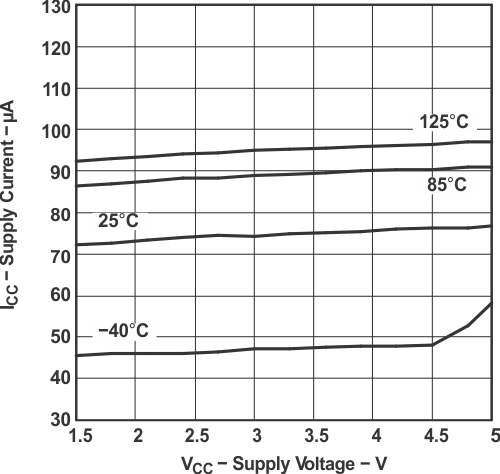 Figure 1. Supply Current vs
Figure 1. Supply Current vsSupply Voltage
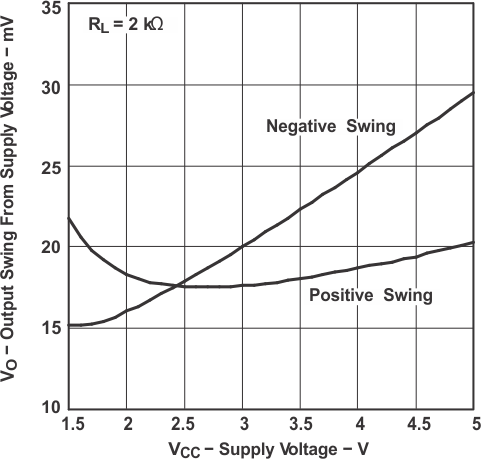 Figure 3. Output Voltage Swing vs
Figure 3. Output Voltage Swing vsSupply Voltage
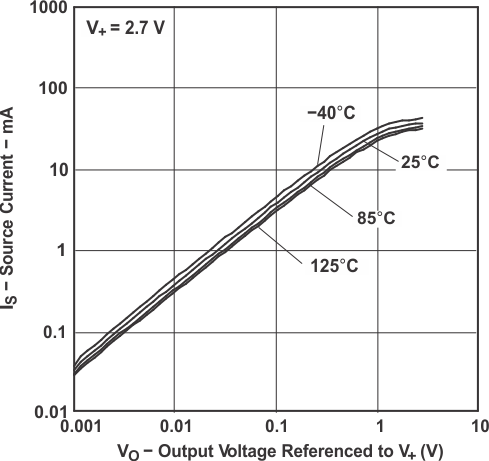 Figure 5. Source Current vs
Figure 5. Source Current vsOutput Voltage
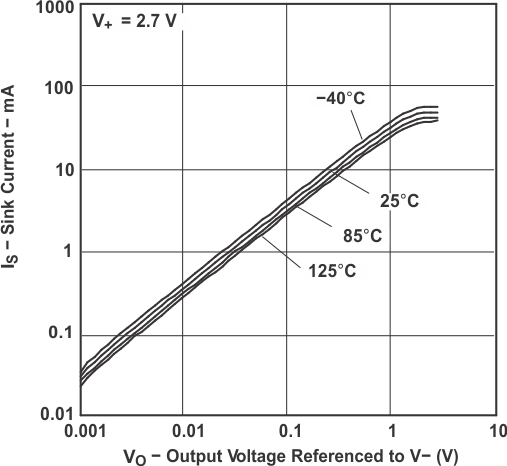 Figure 7. Sink Current vs
Figure 7. Sink Current vsOutput Voltage
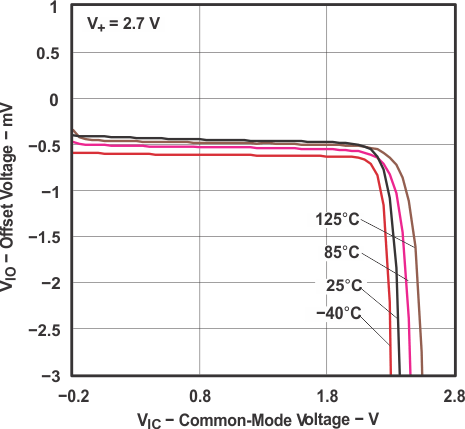 Figure 9. Offset Voltage vs
Figure 9. Offset Voltage vsCommon-Mode Voltage
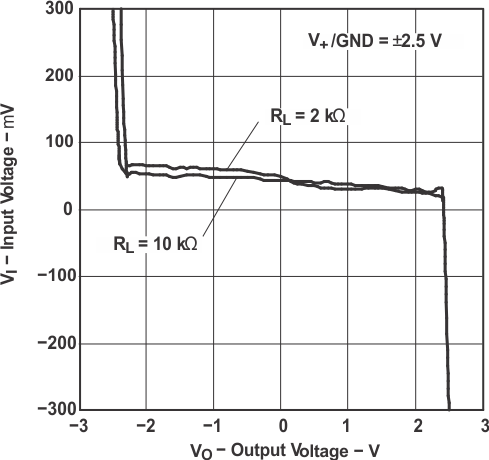 Figure 11. Input Voltage vs Output Voltage
Figure 11. Input Voltage vs Output Voltage
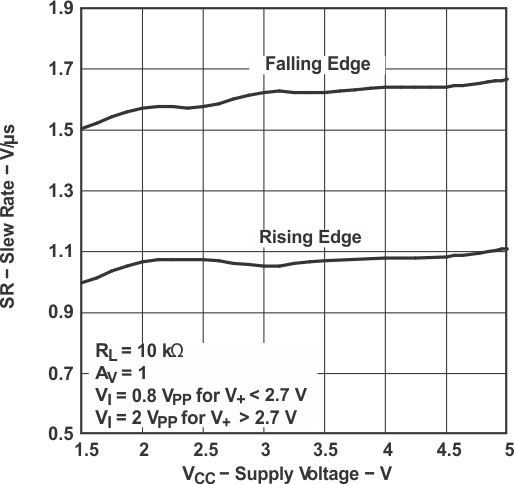 Figure 13. Slew Rate vs
Figure 13. Slew Rate vsSupply Voltage
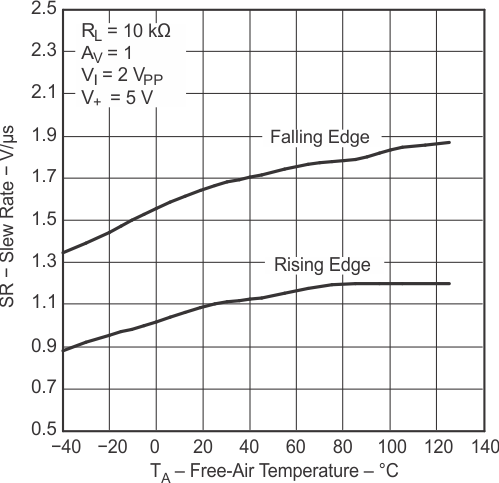 Figure 15. Slew Rate vs
Figure 15. Slew Rate vsTemperature
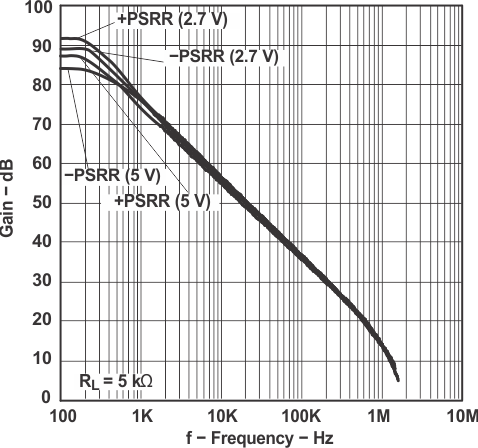 Figure 17. PSRR vs Frequency
Figure 17. PSRR vs Frequency
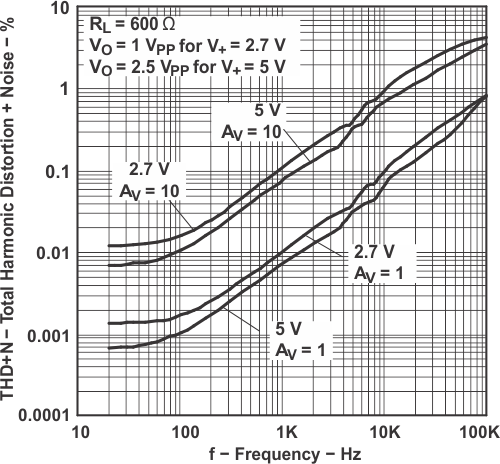 Figure 19. Total Harmonic Distortion +Noise
Figure 19. Total Harmonic Distortion +Noise vs Frequency
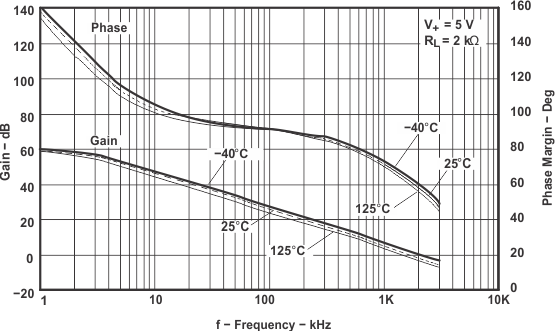 Figure 21. Frequency Response vs
Figure 21. Frequency Response vsTemperature
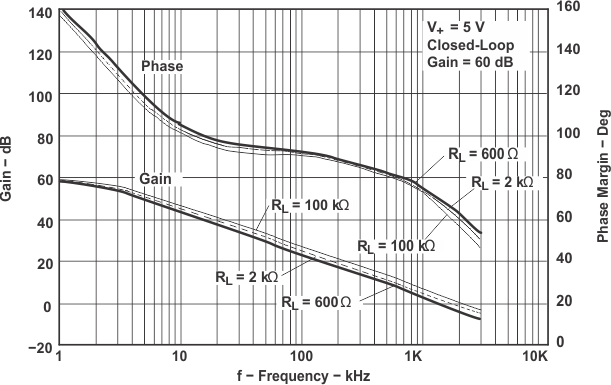 Figure 23. Frequency Response vs RL
Figure 23. Frequency Response vs RL
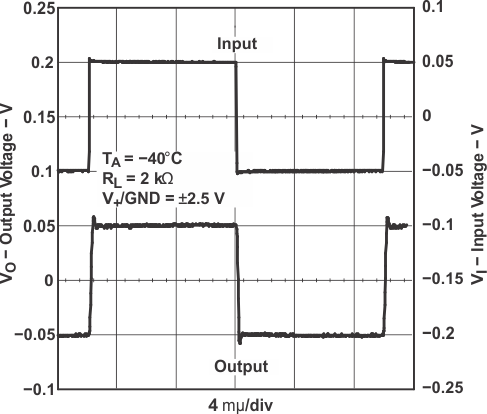 Figure 25. Small-Signal Noninverting Response
Figure 25. Small-Signal Noninverting Response
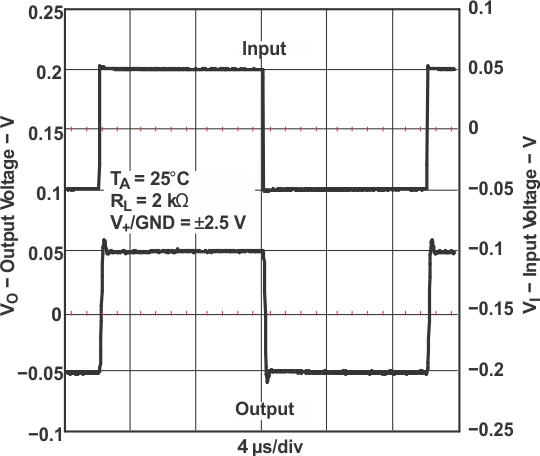 Figure 27. Small-Signal Noninverting Response
Figure 27. Small-Signal Noninverting Response
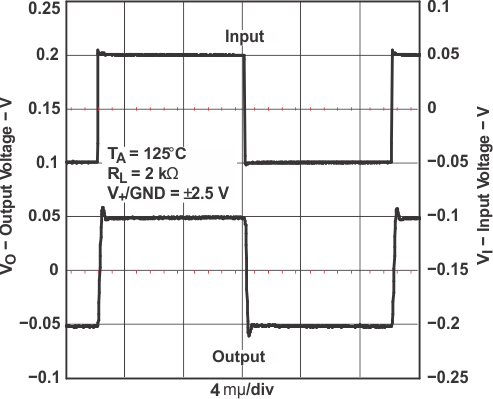 Figure 29. Small-Signal Noninverting Response
Figure 29. Small-Signal Noninverting Response
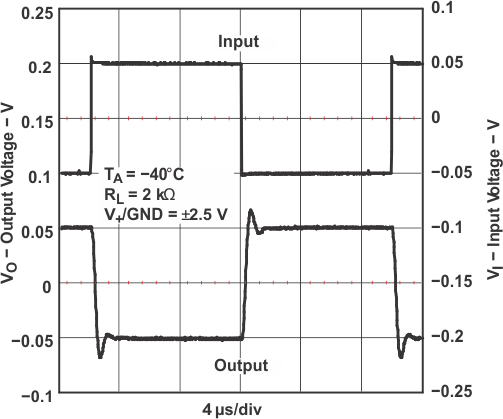 Figure 31. Small-Signal Noninverting Response
Figure 31. Small-Signal Noninverting Response
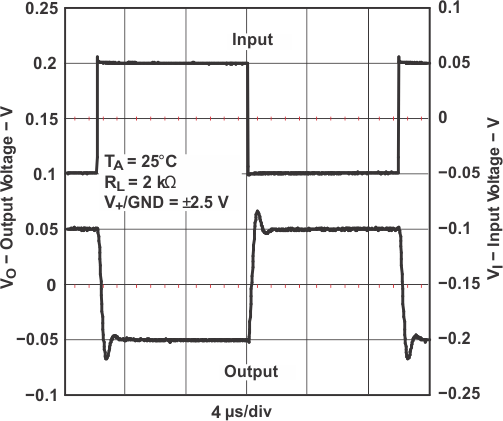 Figure 33. Small-Signal Inverting Response
Figure 33. Small-Signal Inverting Response
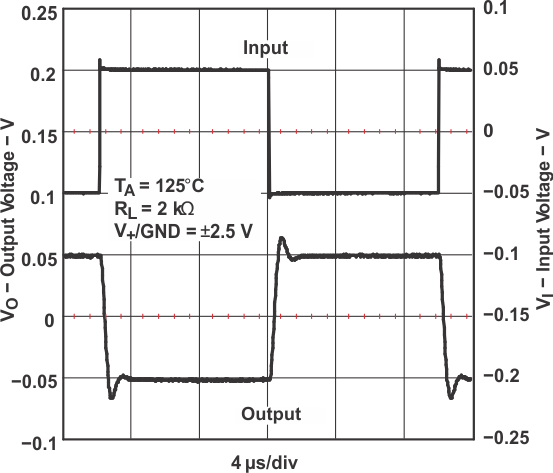 Figure 35. Small-Signal Inverting Response
Figure 35. Small-Signal Inverting Response
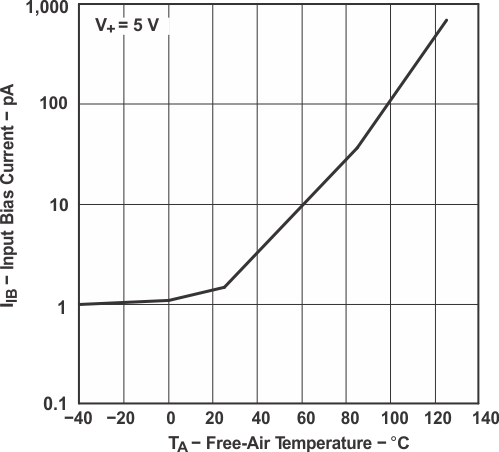 Figure 2. Input Bias Current vs
Figure 2. Input Bias Current vsTemperature
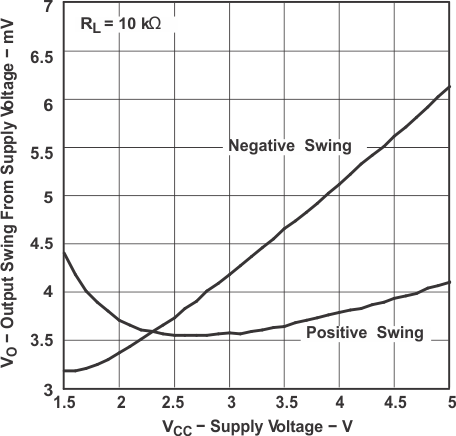 Figure 4. Output Voltage Swing vs
Figure 4. Output Voltage Swing vsSupply Voltage
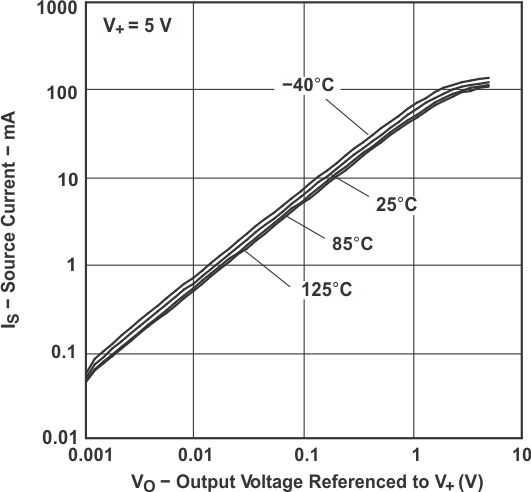 Figure 6. Source Current vs
Figure 6. Source Current vsOutput Voltage
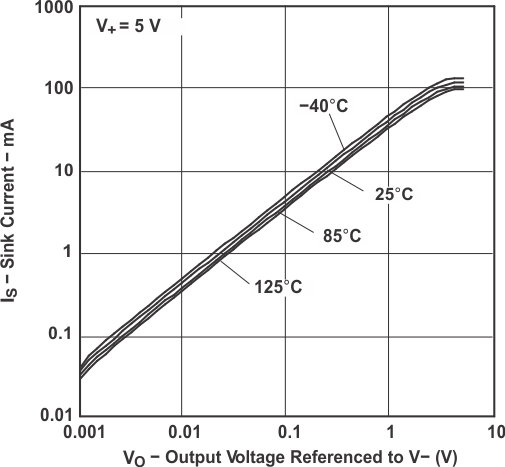 Figure 8. Sink Current vs
Figure 8. Sink Current vsOutput Voltage
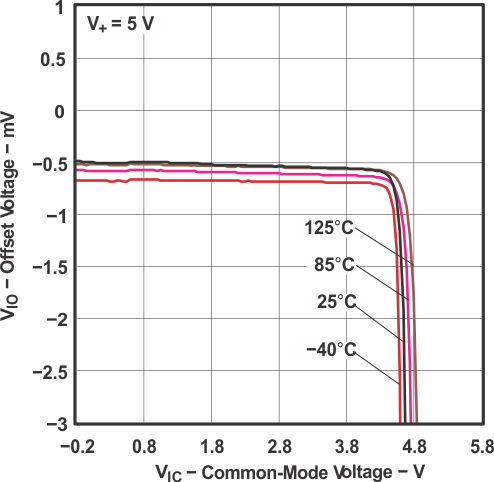 Figure 10. Offset Voltage vs
Figure 10. Offset Voltage vsCommon-Mode Voltage
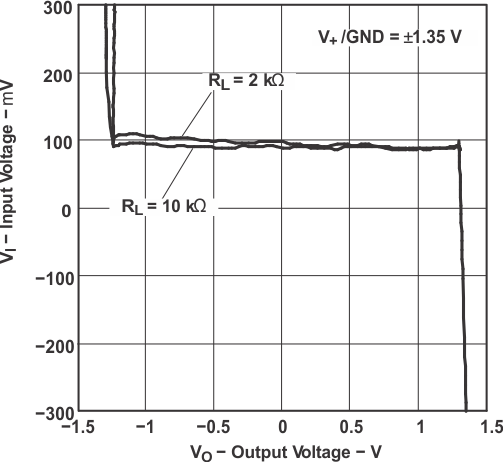 Figure 12. Input Voltage vs
Figure 12. Input Voltage vsOutput Voltage
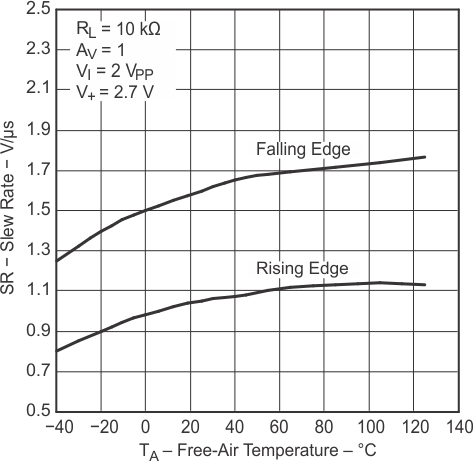 Figure 14. Slew Rate vs
Figure 14. Slew Rate vsTemperature
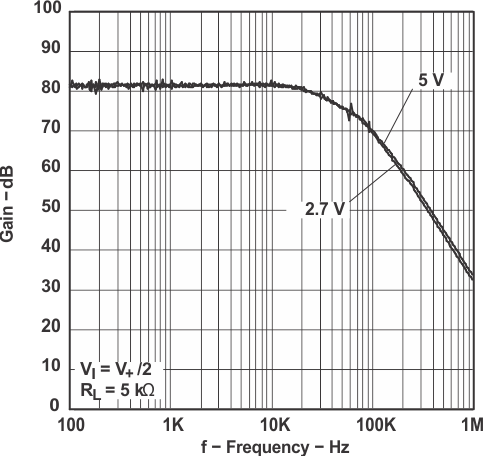 Figure 16. CMRR vs Frequency
Figure 16. CMRR vs Frequency
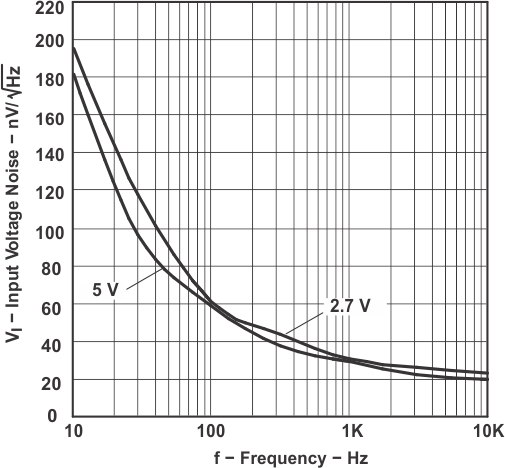 Figure 18. Input Voltage Noise vs
Figure 18. Input Voltage Noise vsFrequency
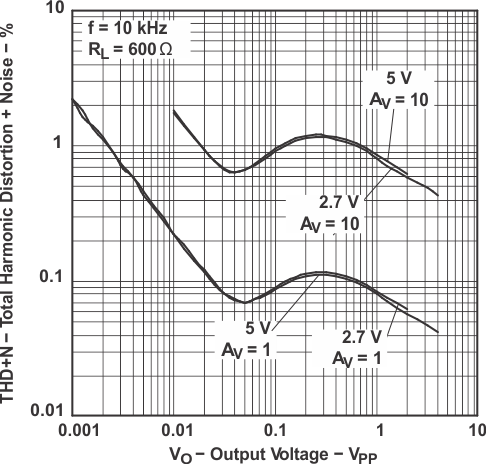 Figure 20. Total Harmonic Distortion +Noise
Figure 20. Total Harmonic Distortion +Noise vs Output Voltage
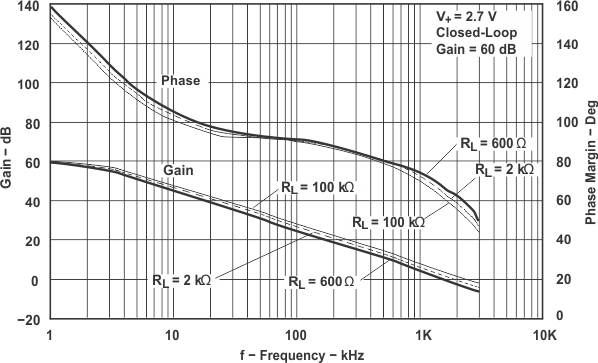 Figure 22. Frequency Response vs RL
Figure 22. Frequency Response vs RL
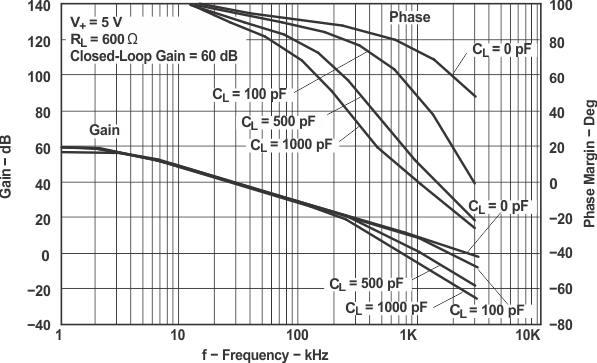 Figure 24. Frequency Response vs CL
Figure 24. Frequency Response vs CL
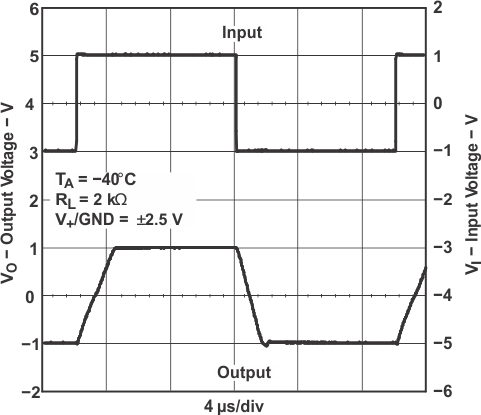 Figure 26. Large-Signal Noninverting Response
Figure 26. Large-Signal Noninverting Response
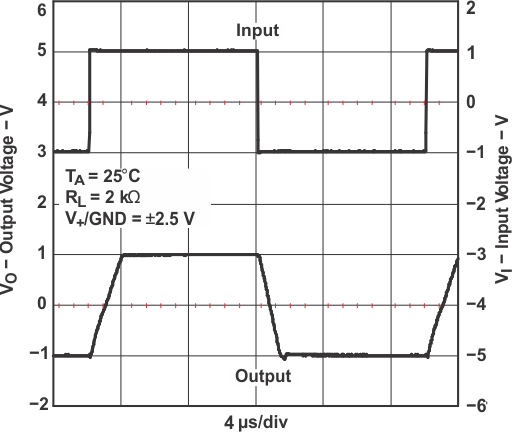 Figure 28. Large-Signal Noninverting Response
Figure 28. Large-Signal Noninverting Response
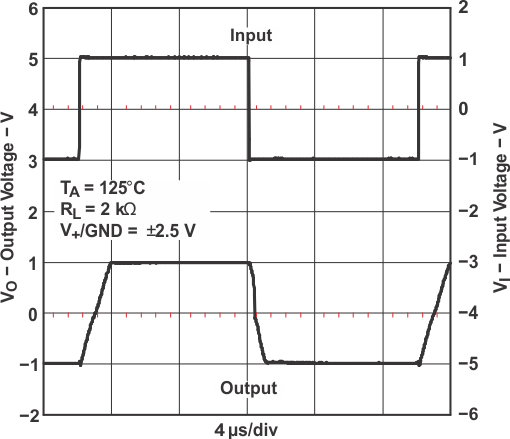 Figure 30. Large-Signal Noninverting Response
Figure 30. Large-Signal Noninverting Response
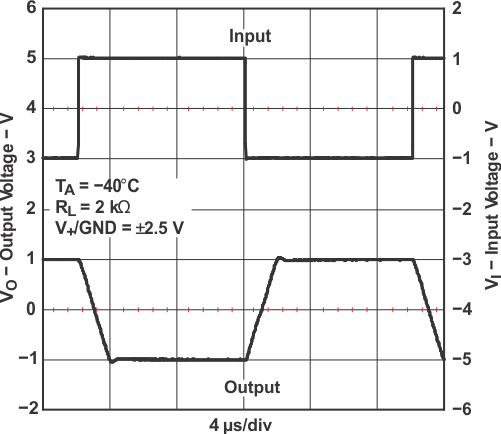 Figure 32. Large-Signal Inverting Response
Figure 32. Large-Signal Inverting Response
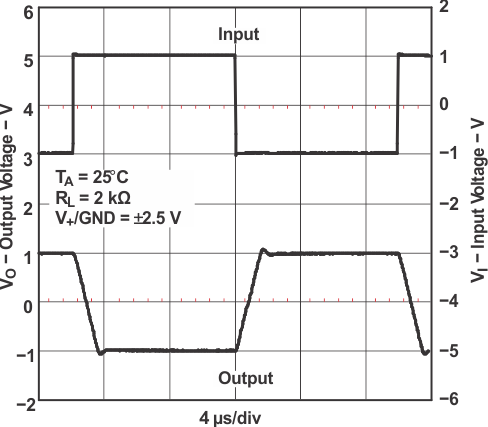 Figure 34. Large-Signal Inverting Response
Figure 34. Large-Signal Inverting Response
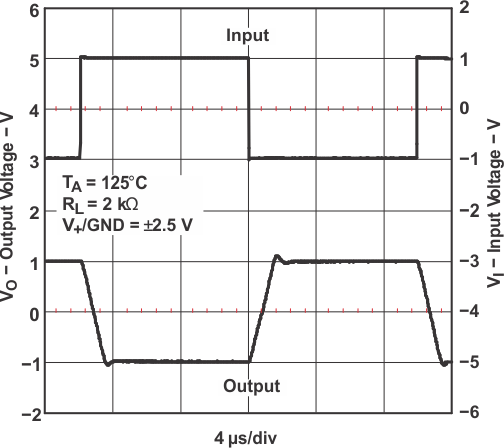 Figure 36. Large-Signal Inverting Response
Figure 36. Large-Signal Inverting Response